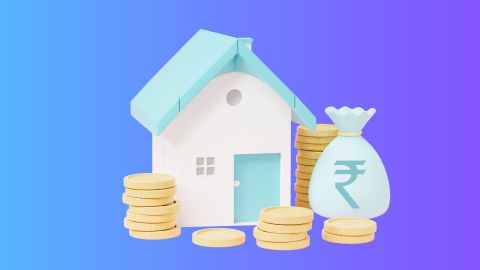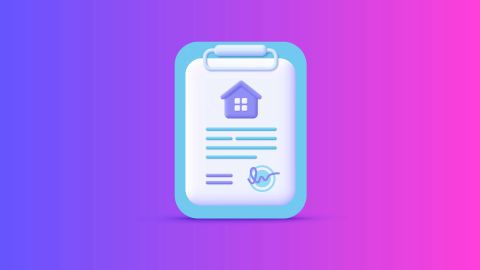Choosing between a fixed or floating interest rate for your home loan depends on how you see future interest trends. A floating rate might work well if you believe rates will drop or want to save on interest early on. On the other hand, a fixed rate brings peace of mind with steady EMIs, especially if you think rates might rise. If you are unsure, a mix of both – a part-fixed, part-floating loan – could offer balance. Most lenders also allow switching between the two for a small fee, giving you more control over your loan in changing times.
Ready to secure your dream home with competitive interest rates? Check your home loan offers from Bajaj Finserv today. You may already be eligible, find out by entering your mobile number and OTP.
Which home loan interest rate type is best: fixed or floating
A home loan’s interest rate determines its affordability, so it is important that you pay attention to it. Apart from the home loan interest rates, consider the type of interest that you opt for. You can choose between a fixed-interest home loan and a floating-interest home loan. It is important that you understand the two options before making a choice.
Both fixed interest rates and floating interest rates have their pros and cons. Here’s a look at how the two differ.
What is a fixed interest rate
Fixed home loan interest rate is one where the rate does not fluctuate with changes in market forces. This rate remains steady throughout the tenor of the loan. When you opt for a fixed rate of interest, you can easily forecast your EMIs. Apart from that, since the rate remains steady, you can plan for home loan repayment with great ease as well. However, since this rate is constant, lenders usually charge you a slightly higher amount as compared to a floating interest rate home loan.
Pros and cons of fixed interest rates
Aspect |
Pros |
Cons |
EMI predictability |
Fixed EMIs make budgeting easier. |
No flexibility to adjust with rate drops. |
Market fluctuations |
Protected from rising interest rates. |
Cannot benefit from falling rates. |
Initial rates |
Financial stability despite higher rates. |
Fixed rates are typically higher. |
Tenure flexibility |
Predictable tenure with consistent EMIs. |
Converting to floating rates may incur fees. |
Suitability |
Ideal for long-term planners seeking certainty. |
Not ideal for volatile or falling rate markets. |
Planning your home purchase with predictable EMIs? Bajaj Finserv offers fixed interest rates starting at just 7.45%* p.a. Check your loan offers now. You may already be eligible, find out by entering your mobile number and OTP.
What is a floating interest rate
Floating home loan interest rate is one that varies over the course of your loan’s tenor. When you opt for this rate of interest, you have to understand that you can’t predict EMIs with utmost certainty. The benefit of this rate of interest is that when rates drop, you will pay lower EMIs. On the other hand, when the interest rate rises, you will have to pay more towards your home loan.
However, in the event of the home loan interest rate rising repeatedly, you can request your lender for an extension in the tenor. Also remember that since the tenor of a home loan is usually lengthy, on the whole, the rise and fall in the interest rate evens out.
Pros and cons of floating interest rates
Aspect |
Pros |
Cons |
Rate adjustments |
Benefit from declining market interest rates. |
Vulnerable to rising interest rates. |
Initial rates |
Usually lower than fixed rates. |
Inconsistent EMIs make budgeting harder. |
Cost over tenure |
Potentially lower overall cost if rates drop. |
Total cost can increase if rates rise. |
Flexibility |
Suited for shorter loans or volatile incomes. |
Less predictable for long-term planning. |
Suitability |
Ideal for risk-takers in a falling rate market. |
Not ideal for those seeking financial stability. |
When should you opt for a fixed interest home loan
This type of home loan interest rate is ideal for you if the rate of interest at the time of taking the loan is low and you want to make the most of it. For example, if the rate was 12% a few years ago and has currently fallen to 10%, now would be a good time to borrow a loan with a fixed rate. Also, if you are uncomfortable with a constantly shifting interest rate, this option will offer more stability. Also, if you find that the interest rate results in more than 25–30% of your monthly income once you calculate the EMIs, you shouldn’t hesitate to opt for this rate.
When should you opt for a floating interest home loan
If you are well-versed in the real estate market, choosing a floating-interest home loan is ideal. Also, if you’re expecting home loan rates to fall soon, choosing this option will prove to be beneficial. In addition, borrowing a floating interest home loan is beneficial as you do not have to pay any charges on part-prepayment or foreclosure as an individual borrower.
Take advantage of flexible floating interest rates with no foreclosure charges. Apply for a Bajaj Housing Finance Home Loan with approval in just 48 hours*. Check your eligibility today by entering your mobile number and OTP.
Time bound fixed interest rate
Determining which home loan is best, fixed or floating, depends entirely on your finances and outlook. However, bear in mind that most home loan providers have a combination of the two. This is known as the time-bound fixed interest rate home loan. Here, for the first few years of the tenor, usually 3–5 years, the loan operates as a fixed interest rate loan. Thereafter, it turns into a floating interest rate home loan. As a result, you can enjoy the best of both options.
Important links: Home Loan Eligibility Criteria | Documents Required for Home Loan | Home Loan Balance Transfer | Joint Home Loan | Home Loan Tax Benefits
Know the difference between fixed vs. floating interest rate loan
Aspect |
Fixed Rate Home Loan |
Floating Rate Home Loan |
Interest Rate |
Remains constant throughout the loan tenure. |
Fluctuates based on market interest rates. |
Predictability |
Offers rate stability, making monthly payments predictable. |
Monthly payments can vary as interest rates change. |
Rate changes |
Interest rate remains fixed for a specified period (e.g., 2 to 10 years) before resetting. |
Rates can change periodically (e.g., every 3 or 6 months) based on the benchmark rate (e.g., MCLR, Repo Rate). |
Risk tolerance |
Suitable for borrowers who prefer budget stability and can absorb higher initial EMIs. |
Suitable for borrowers who are willing to take interest rate risk and want lower initial EMIs. |
Prepayment charges |
Fixed rate loans may have prepayment penalties. |
Floating rate loans often have lower or no prepayment charges. |
Market movements impact |
Market interest rate changes do not affect fixed-rate loans during the fixed period. |
Vulnerable to market rate fluctuations, impacting EMIs. |
Rate conversion options |
May allow switching to a floating rate after the fixed period. |
Options to switch to fixed or lower floating rates may be available. |
Ready to make an informed choice for your home loan? Bajaj Finserv offers flexible interest rate options with loan amounts up to Rs. 15 Crore* and tenures up to 32 years. Check your loan offers now. You may already be eligible, find out by entering your mobile number and OTP.
Popular calculators for your financial calculations
Frequently asked questions
The choice between a fixed or floating home loan interest rate depends on your financial situation and risk tolerance. Fixed rates offer predictability and protection from rate hikes but may have higher initial rates. Floating rates start lower, can save money if rates decrease, but come with rate volatility and less predictability. The best option depends on your outlook on interest rate movements and financial stability.
Fixed-rate loans offer predictable payments and protection from rate hikes, making them a good choice for those with low risk tolerance and a desire for financial stability. However, they come with higher initial rates and limited flexibility. The decision should align with your risk tolerance, interest rate outlook, financial stability, and long-term plans.
Floating interest rates may seem higher than fixed rates initially because they include a margin over benchmark rates to account for potential future rate increases. Lenders add this margin to protect against interest rate risk and to provide a cushion for upward rate movements. While floating rates offer flexibility, they can increase if market rates rise, leading to higher monthly payments.
You can opt for a home loan from Bajaj Finance and get a home loan at an interest rate starting from 7.45%* p.a
Fixed rate bonds offer a constant interest rate throughout the bond’s tenure, providing predictable returns. Floating rate bonds have variable interest rates that adjust periodically based on market conditions, offering the potential for higher returns when rates rise, but also carrying more risk if rates decline.
A fixed bond pays a consistent interest rate, ensuring stable returns over time. In contrast, a floating bond’s interest rate fluctuates according to an underlying benchmark, meaning the returns can vary depending on changes in market interest rates.
Both have benefits. Fixed rates give stable monthly payments, while floating rates can help you save money if market rates go down. The right choice depends on how much risk you can handle and what you think will happen to interest rates in the future.
No matter which option suits you better, Bajaj Finserv offers both fixed and floating rate home loans at competitive rates. Check your loan offers today. You may already be eligible, find out by entering your mobile number and OTP.
The main drawback is that your EMIs can increase if market rates go up. This can make it harder to plan your monthly budget, especially if you prefer consistent payments.
Floating interest rates are usually lower than fixed ones, but exact rates change from one lender to another. It is best to check directly with banks or housing finance companies for the latest rates in 2025.
For the most competitive floating interest rates, explore Bajaj Housing Finance Home Loan options starting at just 7.45%* p.a. Check your loan offers now. You may already be eligible, find out by entering your mobile number and OTP.








